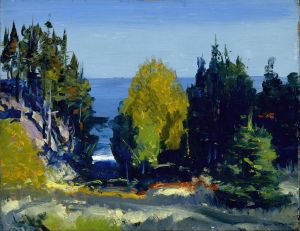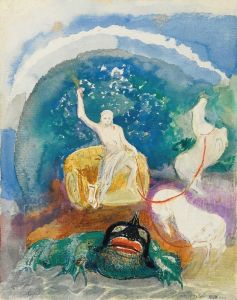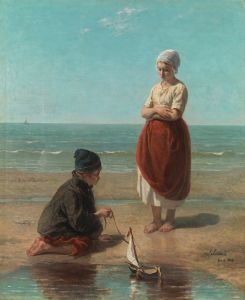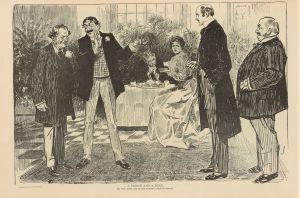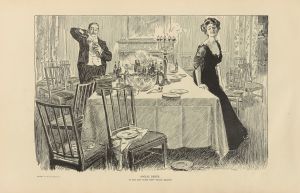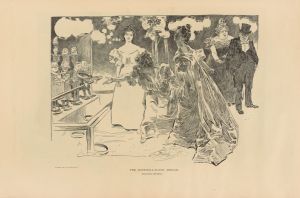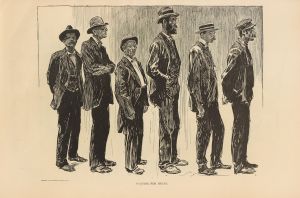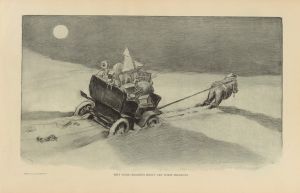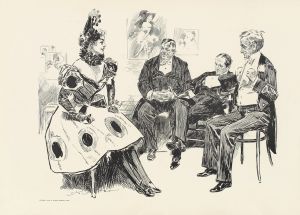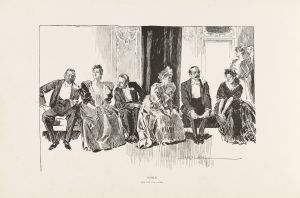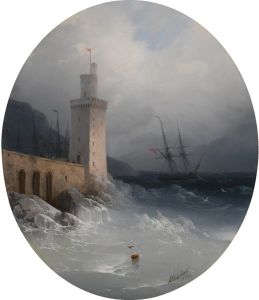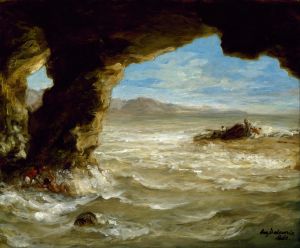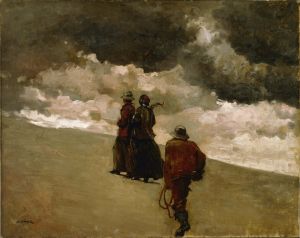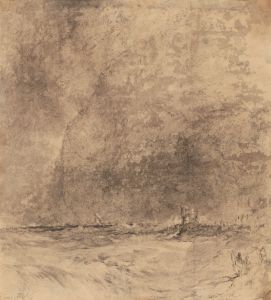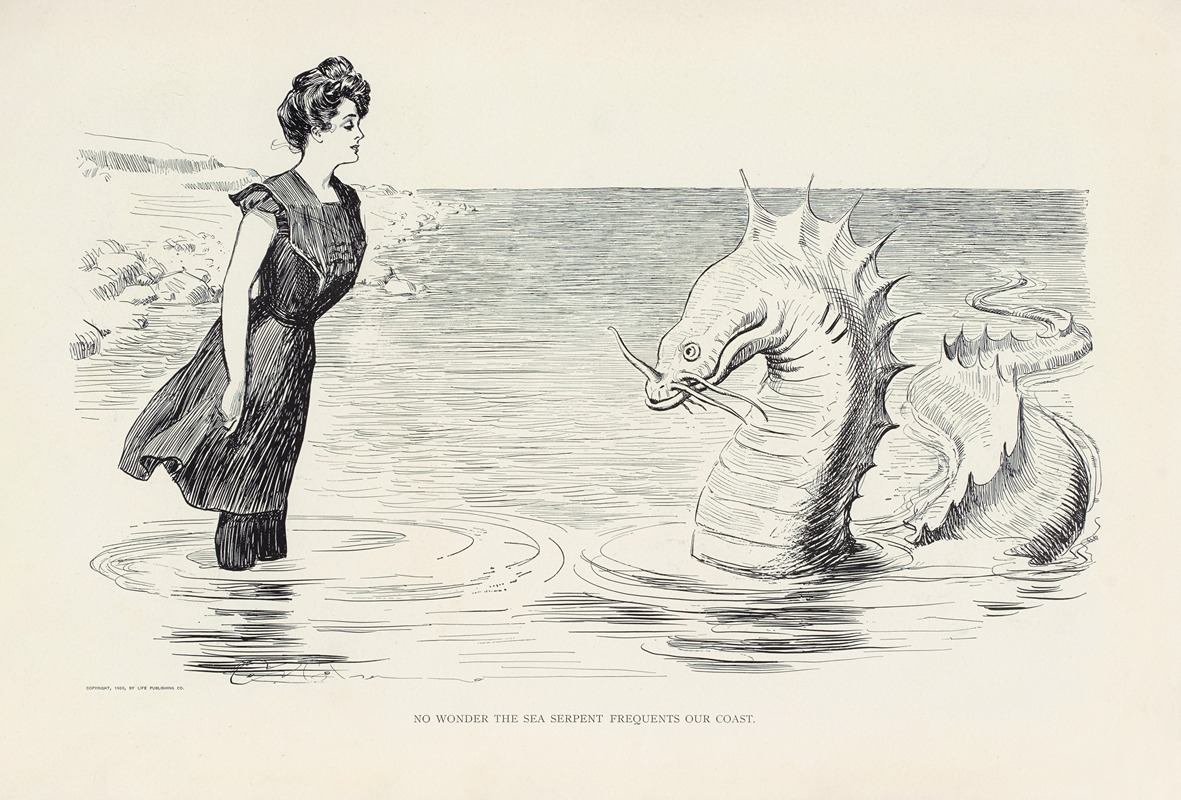
No wonder the sea serpent frequents our coast
A hand-painted replica of Charles Dana Gibson’s masterpiece No wonder the sea serpent frequents our coast, meticulously crafted by professional artists to capture the true essence of the original. Each piece is created with museum-quality canvas and rare mineral pigments, carefully painted by experienced artists with delicate brushstrokes and rich, layered colors to perfectly recreate the texture of the original artwork. Unlike machine-printed reproductions, this hand-painted version brings the painting to life, infused with the artist’s emotions and skill in every stroke. Whether for personal collection or home decoration, it instantly elevates the artistic atmosphere of any space.
Charles Dana Gibson was an influential American illustrator, best known for his creation of the "Gibson Girl," a representation of the idealized American woman at the turn of the 20th century. His work was widely published in magazines such as Life, Harper's Weekly, and Scribner's, and he became one of the most celebrated illustrators of his time.
One of Gibson's notable works is the illustration titled "No wonder the sea serpent frequents our coast." This piece was published in the early 20th century, a period when Gibson was at the height of his career. The illustration is a satirical commentary, a common theme in Gibson's work, which often reflected social norms and cultural phenomena of the time.
The illustration depicts a scene on a beach, where a group of women, presumably "Gibson Girls," are gathered. The women are elegantly dressed in the fashion of the era, embodying the grace and poise that characterized the Gibson Girl. In the background, a sea serpent is humorously shown approaching the shore, seemingly drawn by the presence of these attractive women. This whimsical scenario plays on the myth of sea serpents, which were popular subjects of folklore and maritime legend during the 19th and early 20th centuries.
Gibson's work often included elements of humor and satire, and "No wonder the sea serpent frequents our coast" is no exception. The illustration can be seen as a playful jab at the sensationalism of sea serpent sightings, which were often reported in newspapers and captivated the public imagination. By juxtaposing the mythical creature with the fashionable women, Gibson creates a humorous narrative that both entertains and critiques societal trends.
The "Gibson Girl" itself was a cultural icon, representing a new standard of femininity that was independent, confident, and socially active. This idealized image of women was both celebrated and critiqued, as it reflected the changing roles of women in society during the Progressive Era. Gibson's illustrations, including "No wonder the sea serpent frequents our coast," contributed to the dialogue about gender roles and expectations.
Charles Dana Gibson's legacy as an illustrator is significant, as his work captured the spirit of an era and influenced the visual culture of his time. His ability to blend humor with social commentary made his illustrations both popular and thought-provoking. "No wonder the sea serpent frequents our coast" is a testament to Gibson's skill in using art to reflect and critique the world around him, making it a notable piece in the history of American illustration.





